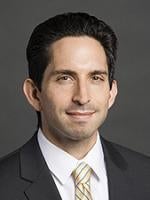On June 11, 2018, in China Agritech, Inc. v. Resh,1 the United States Supreme Court held that the American Pipe tolling doctrine, which suspends the running of the statute of limitations applicable to the claims of individual class members during the pendency of a putative class action, does not toll the limitations period with respect to later-filed class actions. The purpose of the American Pipe doctrine, the Court explained, is to foster efficiency. This interest is served by tolling the statute of limitations applicable to claims of individual class members because, if class certification is granted, the case will proceed as a class action, rendering individual suits unnecessary (although the stockholder could affirmatively choose to opt out of the class). Those considerations do not apply to later-filed class claims. Rather, efficiency favors that all would-be class representatives come forward early in a case to be bound by a court’s class certification decision. If American Pipe tolling applied to class claims, the result could be an endless parade of successive class actions. Thus, China Agritech cautions potential class plaintiffs to be mindful of pending class suits and assert their class claims as soon as possible, or else risk losing the opportunity once and for all.
In a concurring opinion, Justice Sotomayor expressed concern that the Court’s decision, which she construed as applying to all class actions under Rule 23 of the Federal Rules of Civil Procedure (even though the plaintiff in China Agritech asserted claims only under the Securities Exchange Act of 1934 (the “Exchange Act”)), risks unfairness to potential class plaintiffs who may be unaware of pending class litigation. Justice Sotomayor would have expressly limited the anti-tolling rule to securities class actions commenced under the Exchange Act and thus governed by the Private Securities Litigation Reform Act of 1995 (“PSLRA”).2 The PSLRA, unlike Rule 23, requires ample notice of the pendency of a putative class action to all would-be class representatives. It is not clear, however, whether the majority opinion applies outside the context of claims asserted under the Exchange Act or other statutes where prominent notice to potential class plaintiffs is required.
The American Pipe Doctrine
The Supreme Court previously addressed the circumstances in which a pending class action tolls (or suspends) the statute of limitations applicable to claims in American Pipe & Construction Co. v. Utah, 414 U.S. 538 (1974), and Crown, Cork & Seal Co. v. Parker, 462 U.S. 345 (1983). In American Pipe, the Supreme Court held that if a court denies certification of a putative class, class members may intervene as individual plaintiffs in the still-pending litigation, even if the statute of limitations applicable to their claims otherwise would have lapsed. The Court explained that its ruling was consistent with the purpose of Rule 23, which sets forth the procedure governing federal class actions: “Rule 23 is not designed to afford class action representation only to those who are active participants in or even aware of the proceedings in the suit prior to the order that the suit shall or shall not proceed as a class action.”3 Moreover, “[a] contrary rule allowing participation only by those potential members of the class who had earlier filed motions to intervene in the suit would deprive Rule 23 class actions of the efficiency and economy of litigation which is a principal purpose of the procedure.”4
In Crown, the Court extended American Pipe to allow class members not only to intervene in still-pending litigation but also to initiate new individual suits after denial of class certification. The Court reasoned that requiring plaintiffs to commence individual actions prior to denial of class certification would result in needless multiplicity of litigation—precisely the situation that Rule 23 was designed to avoid.5 Further, extending American Pipe to individual suits may be preferable because (i) a class action may be an inconvenient mechanism for obtaining relief, (ii) a class member may not wish to share control over the litigation, or (iii) permission to intervene in the class may be denied for reasons unrelated to the merits.6 In addition, the commencement of the class action alone gives defendants adequate notice of potential liability. “Tolling the statute of limitations thus creates no potential for unfair surprise, regardless of the method class members choose to enforce their rights upon denial of class certification.”7
Following Crown, an open question was whether American Pipe tolling applies not only to individual suits but also to later-filed class claims.
The Supreme Court’s Decision in China Agritech
On February 11, 2011, Theodore Dean filed a class action complaint, alleging that China Agritech, a fertilizer manufacturer headquartered in Beijing, China, engaged in fraud and misleading business practices in violation of the Exchange Act, causing its stock price to fall. The action was commenced within the two-year statute of limitations applicable to Exchange Act claims.8 On May 3, 2012, the District Court denied class certification on the basis that plaintiffs had failed to demonstrate an efficient market for the company’s stock, precluding plaintiffs from utilizing the fraud-on-the-market theory to establish a presumption of reliance on behalf of the entire class. Dean settled his individual claims, and on October 4, 2012, Dean’s former counsel filed a new class action complaint on behalf of Kevin Smyth, another investor, alleging largely the same grounds but with enhanced reliance allegations. The court again denied class certification, this time on typicality and adequacy grounds, in part because Smyth had connections to Dean and was potentially subject to a claim preclusion defense that was atypical of other class members’ claims.
On June 30, 2014, over a year after the statute of limitations had expired, Michael Resh, through different counsel, filed another putative class action based on the same allegations. The district court dismissed the complaint as untimely. The U.S. Court of Appeals for the Ninth Circuit reversed, holding that the applicable statute of limitations was tolled during the pendency of the prior class actions. According to the Ninth Circuit, tolling “would promote economy of litigation by reducing incentives for filing protective class suits during the pendency of an initial certification motion.”9
The Supreme Court reversed and remanded, holding that the American Pipe doctrine does not apply to successive class actions. Writing for eight justices, Justice Ginsburg explained that American Pipe tolls individual claims because “economy of litigation favors delaying those claims until after a class-certification denial.”10 It would be wasteful to encourage the filing of individual suits when a class certification decision may obviate the need for such suits.11 In contrast, economy of litigation does not favor encouraging successive class suits. Rather, it would be more efficient for all would-be class representatives to come forward at the outset of a case for a binding, global decision on class representative status.12 Moreover, unlike individual claims (for which the clock would start running again after class certification denial), there could be no end date for class claims, whose statutes of limitations would be tolled during the pendency of each successive class action.13
Justice Ginsburg cited additional factors that, if not dispositive, nonetheless supported the efficiency rationale for denying tolling to successive class claims. First, Rule 23 provides that class certification decisions should be made “at any early practicable time.”14 Justice Ginsburg observed that the Rule allows “additional time to ‘explore designation of class counsel’ and consider ‘additional [class counsel] applications rather than denying class certification,’ thus ‘afford[ing] the best possible representation for the class.”15 Second, the PSLRA, which “governs this litigation,” likewise is aimed at drawing all potential lead plaintiffs into the suit so the district court will have the full roster of contenders.16 It does this by requiring the class plaintiff to publish notice in a nationwide publication within 20 days of filing the complaint, giving any other potential class representative 60 days in which to move the court to serve as lead plaintiff.17 Finally, Justice Ginsburg stated that, in this case, the plaintiff had failed to qualify for “equitable tolling,” which requires plaintiffs to “demonstrate that they have been diligent in the pursuit of their claims.”18 Resh, however, was not diligent. Despite proper notice under the PSLRA in the prior action, Resh failed to protect his interests, instead waiting until well after the statute of limitations expired to file his own class action complaint.19
Justice Sotomayor’s Concurring Opinion
Concurring in the judgment only, Justice Sotomayor would have ruled that only the PSLRA, not Rule 23, requires the rejection of Resh’s late-filed class action. The PSLRA specifically requires putative class action plaintiffs to provide nationwide notice within 20 days of filing the complaint, inviting other investors to present themselves to the court as alternative lead plaintiffs. The PSLRA also provides courts with a well-defined process for selecting the “most adequate” of the candidates as class representatives.20 Justice Sotomayor agreed that, in this case, Resh had failed to come forward in either of the earlier class actions and thus “bypassed that statutory procedure.”21
Outside the PSLRA context, however, Justice Sotomayor warned that the Court’s pursuit of efficiency could lead to injustice. Class certification can be denied not only because the class or its claims are unsuitable for class treatment, but also because the lead plaintiff suffers from some peculiar defect, likely unknown to other potential representatives until it is too late to make a substitution. Justice Sotomayor suggested that the Court should have held “as a matter of equity, that tolling only becomes unavailable for future class claims where class certification is denied for a reason that bears on the suitability of the claims for class treatment,” and not “deficiencies of the lead plaintiff as class representative, or [] some other nonsubstantive defect.”22
To mitigate the impact of the majority’s “unnecessarily broad rule,” Justice Sotomayor advised district courts to liberally permit amendment of the pleadings or intervention of new plaintiffs and counsel in cases in which the PSLRA does not apply.23
Takeaways
- China Agritech resolves a circuit split with regard to the application of tolling to successive class actions. The First, Second, Fifth, and Eleventh Circuits had refused to extend American Pipe in such a manner, instead applying a principle similar to China Agritech – i.e., “Plaintiffs may not stack one class action on top of another and continue to toll the statute of limitations indefinitely.”24 More recently, the Ninth Circuit and Sixth Circuit had extended American Pipe to successive class actions, explaining that the defendants were already on notice of the substantive claims and the general identity of the class members, and any other rule would necessitate duplicative filings by putative class members fearing that class certification might be denied.25 The Third Circuit had adopted a compromise view, holding that American Pipe applies only when class certification is denied based on the class representative’s deficiencies.26 In light of China Agritech, it is now settled law that American Pipe tolling does not apply to successive class claims, regardless of the reason for denial of certification.
- China Agritech is the latest in Supreme Court jurisprudence regarding American PipeLast year, the Supreme Court ruled that American Pipe tolling does not apply to the three-year statute of repose under Section 13 of the Securities Act of 1933. In California Public Employees’ Retirement System v. ANZ Securities, Inc., the Supreme Court distinguished statutes of repose from statutes of limitations, stating that “the purpose of a statute of repose is to create ‘an absolute bar on a defendant’s temporal liability.’”27 Thus, tolling would run counter to congressional intent that a statute of repose ensure finality and certainty.28 China Agritech, which relates to the tolling of the two-year statute of limitations under the Exchange Act, therefore is consistent with ANZ Securities. Unlike a statute of limitations, a statute of repose “puts an outer limit on the right to bring a civil action.”29 While the China Agritech Court observed that, in that case, a five-year statute of repose ultimately would have barred Resh’s class action even if American Pipe tolling had applied, the Court concluded that this safeguard was insufficient to justify tolling successive class actions because “[s]tatutes of repose . . . are not ubiquitous[] [and] [m]ost statutory schemes provide for a single limitation period without any outer limit to safeguard against serial relitigation.”30 Thus, the Court envisions the China Agritech rule to apply in a wide array of class actions under the federal rules including, but not limited to, Exchange Act claims.
- The “watchwords” of the decision are “efficiency” and “economy of litigation.”31 To rebut plaintiff’s argument that disallowing tolling would lead to “needless multiplicity” of such filings, the majority cited figures demonstrating that protective class filings are uncommon.32 Even so, the majority found that a multiplicity of class filings, were they to occur, could be a positive development. Multiple class filings may aid a district court in determining, early on, whether class treatment is appropriate, and the best class representatives. Plaintiffs’ lawyers, however, will have to scrutinize the pedigree of other firms’ purported class representatives and speedily prepare a complaint on behalf of alternative plaintiffs if they suspect a claim or representative will fall short of certification. According to Justice Ginsburg, there is value in incentivizing this effort because it will provide courts the most options for selecting class representatives and lead counsel. In any event, the majority was skeptical that the ruling would lead to duplicative filings, as the Second and Fifth Circuits have adopted the same rule since the 1980s with no evidence of excessive multiple class action filings.33
- The majority also rejected the plaintiff’s argument that its holding runs afoul of the Rules Enabling Act.34 The Rules Enabling Act provides the Supreme Court with “the power to prescribe, by general rules, the forms of process, writs, pleadings, and motions, and the practice and procedure of the district courts of the United States in civil actions.” Such rules, however, “shall not abridge, enlarge or modify any substantive right and shall preserve the right of trial by jury.”35 Justice Ginsburg explained that that “[p]laintiffs have no substantive right to bring their claims outside the statute of limitations.”36
- Justice Sotomayor raised concerns about the fairness of an anti-tolling rule outside of the Exchange Act and PSLRA context. Specifically, she expressed concern that absent the PSLRA’s notice requirements, putative class members effectively may be foreclosed from joining class actions, or the class action may be dismissed due to an unforeseen defect of the lead plaintiff, unrelated to the merits of the claims. In light of these concerns, and assuming the majority’s opinion will apply to all class actions under Rule 23, Justice Sotomayor suggested that “courts should liberally permit amendment of the pleadings or intervention of new plaintiffs and counsel.”37 But does China Agritech truly foreclose any possibility of tolling successive class actions? Although written in broad strokes, the majority opinion does not necessarily stand for such an absolute rule in any conceivable situation. On its facts, China Agritechinvolved a securities fraud suit subject to the PSLRA’s notice provisions. Although the majority invoked Rule 23 as support for its decision, the majority nowhere says that Rule 23, alone, would call for the same result in every case. The Court also invoked the judicially-created concept of equitable tolling as support for its ruling, stating that “to benefit from equitable tolling, plaintiffs must demonstrate that they have been diligent in pursuit of their claims.”38 That rationale would not necessarily apply in Justice Sotomayor’s hypothetical of a potential class plaintiff in a non-securities litigation who, due to inadequate notice, is never even aware of a pending purported class action. The Supreme Court has stated that equitable tolling applies “when a litigant has pursued his rights diligently but some extraordinary circumstance prevents him from bringing a timely action.”39 If a litigant, through no fault of his or her own, fails to assert a class claim due to lack of notice, equitable tolling conceivably could apply. Thus, notwithstanding Justice Sotomayor’s concerns, the Court may have left open the question of whether tolling ever applies to successive class actions, outside of the PSLRA context.
*The authors thank Ian Curry, a 2018 Cadwalader summer associate law clerk, for his contributions to this memo.
1 --- S. Ct. ---, No. 17-432, 2018 WL 2767565 (U.S. June 11, 2018).
2 15 U.S.C. § 78u-4.
3 Am. Pipe & Constr. Co. v. Utah, 414 U.S. 538, 551-52 (1974).
4 Id. at 553.
5 Crown, Cork & Seal Co. v. Parker, 462 U.S. 345, 351 (1983).
6 Id. at 350.
7 Id. at 353.
8 28 U.S.C. § 1658(b)(1).
9 Resh, 2018 WL 2767565, at *5 (citing Resh v. China Agritech, 857 F.3d 994, 1004 (9th Cir. 2017)).
10 Id. at *6.
11 Id.
12 Id.
13 Id. at *8 (“The time to file individual actions once a class action ends is finite, extended only by the time the class suit was pending; the time for filing successive class suits, if tolling were allowed, could be limitless. Respondents' claims happen to be governed by 28 U.S.C. § 1658(b)(2)'s five-year statute of repose, so the time to file complaints has a finite end.”).
14 Id. at *12 (citing Fed. R. Civ. P. 23(c)(1)(A)).
15 Id. at *7.
16 15 U.S.C. § 78u-4(a)(3).
17 Resh, 2018 WL 2767565, at *11.
18 Id.
19 Id.
20 Id.
21 Id.
22 Id. at *13.
23 Id. at *14.
24 Basch v. Ground Round, Inc., 139 F.3d 6, 11 (1st Cir. 1998) (“Plaintiffs may not stack one class action on top of another and continue to toll the statute of limitations indefinitely.”); see also Griffin v. Singletary, 17 F.3d 356, 359 (11th Cir. 1994) (similar); Korwek v. Hunt, 827 F.2d 874, 879 (2d Cir. 1987) (American Pipe does not apply to successive class suits); Salazar-Calderon v. Presidio Valley Farmers Ass’n, 765 F.2d 1334, 1351 (5th Cir. 1985) (“Plaintiffs have no authority for their contention that putative class members may piggyback one class action onto another and thus toll the statute of limitations indefinitely, nor have we found any.”).
25 Resh, 857 F.3d at 1004-05; see also Phillips v. Wal-Mart Stores, Inc., 792 F.3d 637, 652-53 (6th Cir. 2015).
26 Yang v. Odom, 392 F.3d 97, 112 (3d Cir. 2004).
27 137 S. Ct. 2042, 2050 (2017) (citing CTS Corp. v. Waldburger, 134 S. Ct. 2175, 2183 (2014)).
28 Id.
29 CTS Corp., 134 S. Ct. at 2182.
30 Resh, 2018 WL 2767565, at *8.
31 Id. at *11.
32 Id. at *9.
[33] See Korwek, 827 F.2d at 879; Salazar-Calderon, 765 F.2d at 1351.
[34] 28 U.S.C. § 2072.
35 Hanna v. Plumer, 380 U.S. 460, 464 (1965).
36 Resh, 2018 WL 2767565, at *9.
37 Id. at *14.
38 Id. at *7.
39 CTS Corp., 134 S. Ct. at 2183 (citing Lozano v. Montoya Alvarez, 134 S. Ct. 1224, 1231 (2014)).







 />i
/>i
